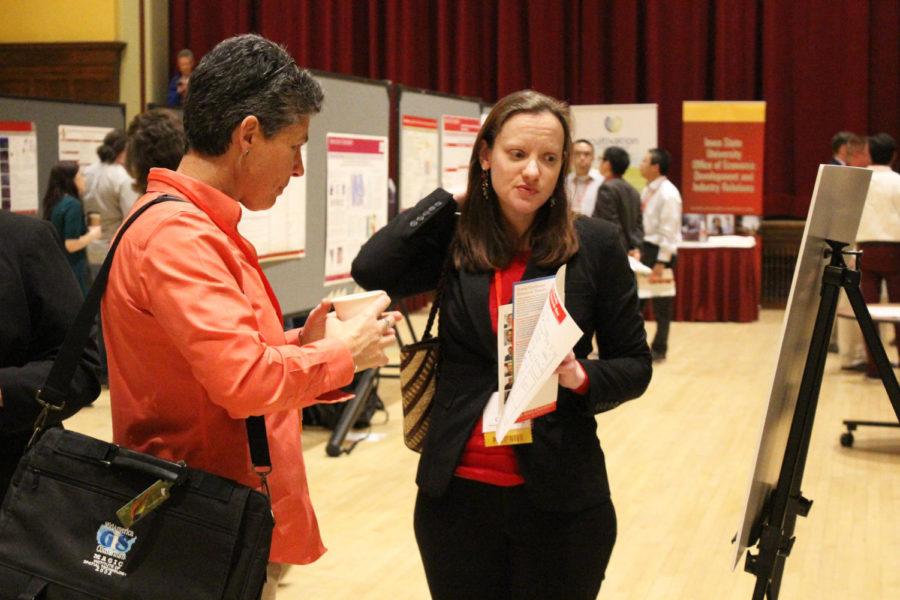Faculty research event aims to encourage collaboration
Gillian Holte/Iowa State Daily
The ISU Faculty Research Day took place March 21, 2017, in the Great Hall of the Memorial Union. Faculty presented posters, talks and exhibits in their research areas.
March 21, 2017
The Iowa State Faculty Research Day provided faculty with an opportunity to present interdisciplinary research and to expand their network Tuesday in the Great Hall of the Memorial Union.
The Office of the Vice President for Research hosted the event as a way for faculty to get together in one room and discuss different areas of research and possible opportunities for them to collaborate.
With more than 300 registered faculty in attendance and 55 displays, the event was a huge success, Guru Rao, associate vice president for research, said.
“The idea was to get faculty from different disciplines and give them the opportunity to mingle and encourage interdisciplinary kinds of research,” Rao said.
Much of the research taking place in today’s fast-paced world requires people to get together and share ideas.
“Some of the more rapid advances or solutions to complex problems are going to come from the interface of two different disciplines,” Rao said.
The various displays covered topics ranging from elementary education research to the creation of tools that will help cities construct and build more sustainable urban environments.
One project in particular aims to reduce the use of petroleum in industrial adhesives.
The Center for Bioplastics and Biocomposites (CBB) is at the forefront of this research, and it hopes to one day have its product completely replace petrochemical-based adhesives.
“We’re taking what used to be a byproduct of the biodiesel process and using it for something else,” Kendra Allen, doctorate student with the CBB, said.
Allen said the first part of the project looked at adhesives used in construction.
The main goal is to reduce the number of VOCs, or volatile organic compounds, from these products used in the industry as a way to become more sustainable when it comes to materials in buildings and everyday household items.
“The biggest challenge so far has been trying to figure out the different processing steps and actually make it so we’re not harming the environment and not using any VOCs,” Allen said.
The event also included “lightning talks,” speeches presented by faculty with a special requirement: the presentation had to remain under four minutes in length, and presenters could only use two slides on a presentation.
The purpose of the lightning talks was to encourage professors and researchers to present their findings in a manner that would allow people who may not know a lot about the topic to follow along.
This was the first year the event took place, and Rao dubbed it the “beta” event.
“The whole idea was [about] ‘how are we going to provide a forum to not simply accidentally bump into somebody else on campus and ask what are they doing’ but have an event where people can come to talk, present their individual projects with posters and give them a speaking opportunity,” Rao said.







